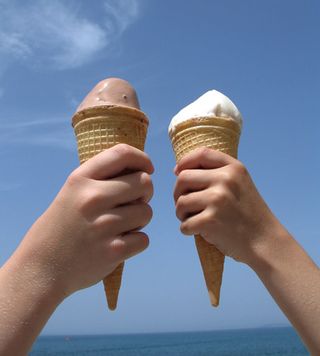New Antifreeze Improves Ice Cream

A few sharp ice crystals ruin ice cream's silky texture, as all connoisseurs know. An edible, tasteless antifreeze may soon come to the rescue.
The non-toxic antifreeze, made from a gelatin protein, could be added to any frozen food to prevent unappetizing ice crystals from forming, without otherwise affecting the food itself.
"This has been a major problem in frozen foods," said food scientist Srinivasan Damodaran of the University of Wisconsin at Madison, who conducted the research. "Ice crystal growth can change properties of frozen food like texture. We live in Wisconsin — dairy country. We produce a lot of ice cream."
The results of the study will be published in the Jan. 9 issue of The American Chemical Society's Journal of Agricultural and Food Chemistry.
Previous attempts to make anti-freeze for frozen foods have not been very effective, Damodaran said. These products have relied on genetically-modified ingredients, mainly from Antarctic fish and other cold-climate species. This is the first antifreeze made from natural ingredients, the researcher said.
Damodaran extracted gelatin protein from cow hide and used it to make a compound called gelatin hydrolysate. When he prepared batches of ice cream made with and without the compound, those with the antifreeze developed significantly smaller and fewer ice crystals.
But how does the antifreeze target the crystals without stopping the ice cream itself from freezing?
Sign up for the Live Science daily newsletter now
Get the world’s most fascinating discoveries delivered straight to your inbox.
"That is the million dollar question," Damodaran told LiveScience. "We still do not understand the mechanism for ice crystal growth. That is a long-term research question."
- Why Does Ice Cream Cause Brain Freeze?
- 10 Things You Didn't Know About You
- Amazing Images: Ice Crystal Glass

